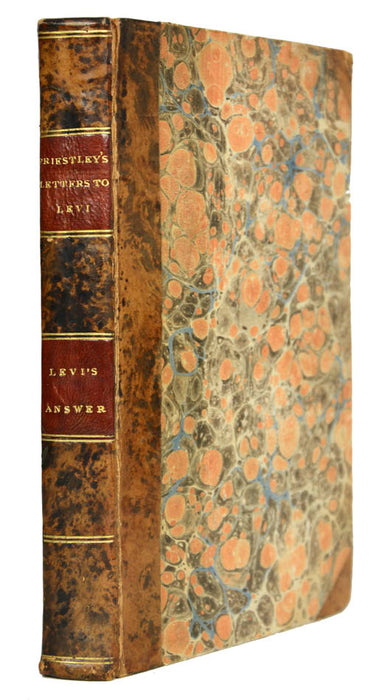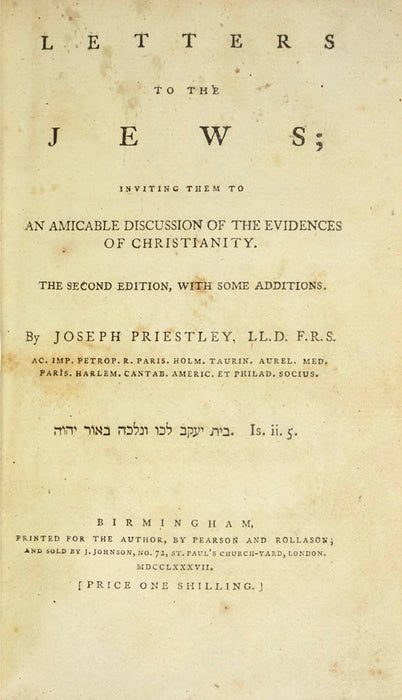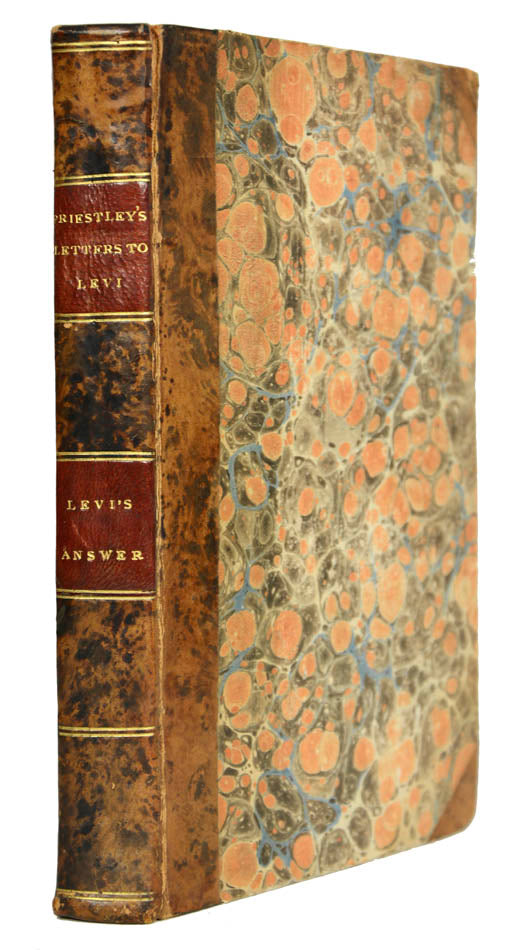
Letters to the Jews;
Inviting them to an Amicable Discussion of the Evidences of Christianity, second edition; [with] Letters to the Jews. Part II. Occasioned by Dr. David Levi's Reply... [and] LEVI, David. Letters to Dr. Priestly [sic], in Answer to those he Addressed to the Jews, second edition [and] Letters to Dr. Priestley, in Answer to His Letters to the Jews, Part. II [etc.].
I and II. Birmingham, for the author, by Pearson and Rollason, and London, Johnson, 1787; III and IV. London, for the author, Johnson, Walker and Parsons, 1787 and 1789. 1787 and 1789.
By featuring both men's letters, this interesting sammelband enables us to follow the theological debate that took place between Joseph Priestly and David Levi at the end of the eighteenth century. In 1786, Joseph Priestley published his Letter to the Jews, which urged them to convert to Anglicanism. According to him, Judaism and Christianity were so close that both religions could be united. Hence his suggestion that the Jews convert to Christianity while preserving some of their own traditions, like the Shabbat. Levi, on the other hand, responded to Priestley by advocating for the independence of the Jewish faith. His replies led to many arguments with Christian scholars, and entailed a new series of letters written by Priestly and included in the present book. The latter also features several of the other letters that Levi wrote to the Christian divines who had criticised his response to Priestley.
Joseph Priestley (1733-1804) was an English clergyman, political theorist, and physical scientist whose work contributed to advances in liberal political and religious thought and in experimental chemistry. He is best remembered for his contribution to the chemistry of gases, being credited by some for the discovery of oxygen. His support for the French Revolution was very controversial, and he eventually had to flee to the United States.
David Levi (1742-1801) was an English-Jewish writer, Hebraist, translator, and poet. Levi was born to a poor immigrant family. Self-educated, he wanted to provide both Jews and Christians with basic material about Judaism in English. Hence his various works explaining Judaism (e.g. A Succinct Account of the Rites and Ceremonies of the Jews [1782]), his translation of Jewish prayer books, and his guide to the Hebrew language. His six-volume English translation of the liturgy served as the foundation for later editions published in England and in the United States.
James Whatman (1702-1759) was an English papermaker and inventor of wove paper. His son, known as James Whatman II or James Whatman the Younger (1741–1798), was also a papermaker who began putting together a personal library at his home, Vinters in Kent. The present book most probably belonged to him.
Four works in 1 vol.; 8vo (19.8 x 12.5 cm); first work without publisher's catalogue at end, one advertisement trimmed with slight loss, nineteenth century mottled half calf, spine gilt with red morocco labels; [5], 2-56, [5], 6-103, [6], 2-56, [5], 2-7, [2], 10-126, [1], 128-159, [1] pp.
Provenance
Delivery
We offer secure and express delivery on all local and international orders of rare books, maps and prints placed through this website.











